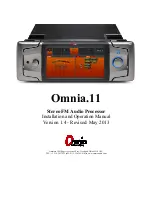
R01UH0823EJ0100 Rev.1.00
Page 947 of 1823
Jul 31, 2019
RX23W Group
32. USB 2.0 Host/Function Module (USBc)
32.3.9.2
Data PID
When the function controller is selected, the USB operates as follows in response to the received PID.
IN direction
DATA0: Sent as data packet PID
DATA1: Not sent
DATA2: Not sent
mDATA: Not sent
OUT direction
DATA0: Received normally as data packet PID
DATA1: Received normally as data packet PID
DATA2: Packets are ignored
mDATA: Packets are ignored
32.3.9.3
Interval Counter
The isochronous transfer interval can be set using the PIPEPERI.IITV[2:0] bits. The interval counter enables the
functions shown in
when the function controller is selected. When the host controller is selected, the USB
generates the token issuance timing. When the host controller is selected, the interval counter operation is the same as
that in the interrupt transfer.
The interval count is carried out when an SOF is received or for interpolated SOFs, so the isochronism can be maintained
even if an SOF is damaged. The frame interval that can be set is the 2
IITV[2:0]
frames.
Table 32.23
Error Detection When a Data Packet is Received
Detection
Priority
Error
Generated Interrupt and Status
1
PID errors
No interrupts are generated (ignored as a corrupted packet).
2
CRC errors and bit stuffing
errors
An NRDY interrupt is generated to set the FRMNUM.CRCE to 1 bit in both cases when
the host controller is selected and the function controller is selected.
3
Maximum packet size
exceeded errors
A BEMP interrupt is generated to set the PID[1:0] bits to 1xb (STALL) in both cases when
the host controller is selected and the function controller is selected.
Table 32.24
Interval Counter Function When the Function Controller is Selected
Transfer
Direction
Function
Conditions for Detection
IN
Flushes transmit buffer
When an IN token cannot be successfully received in the interval frame during an
isochronous IN transfer
OUT
Notifies that a token not being
received
When an OUT token cannot be successfully received in the interval frame during an
isochronous OUT transfer
















































